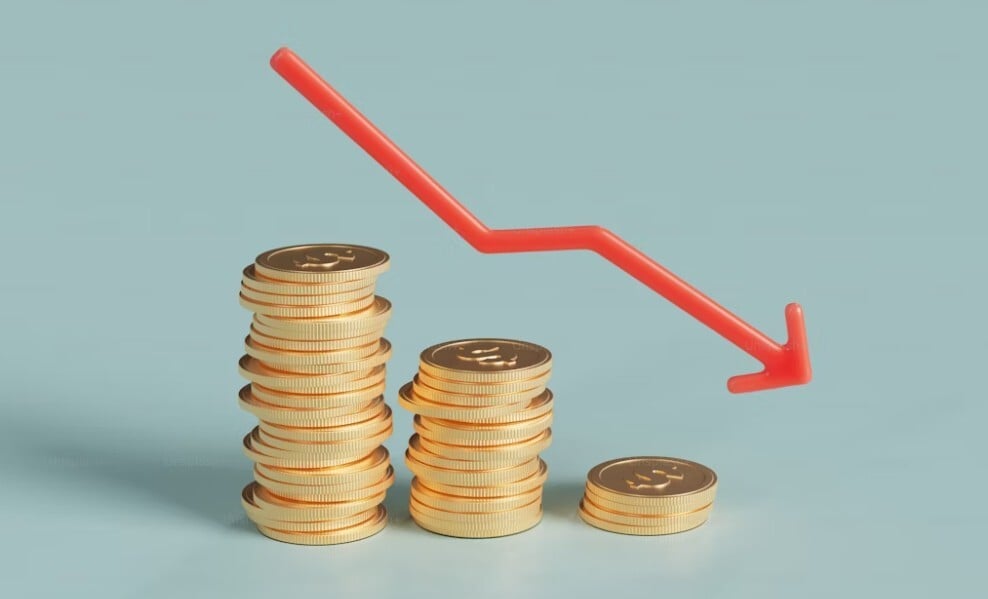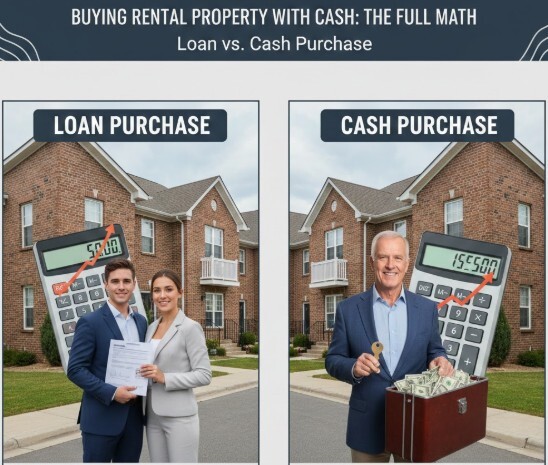Buying Rental Property with Cash: The Full Math (Loan vs. Cash Purchase)
Have a significant amount of money saved up and ready to invest? When it comes toreal estate investing, you’ve got options! In this article, we’ll...
5 min read
Rent To Retirement : Aug 4, 2025 12:00:00 AM

Do you want a lower mortgage payment and more monthly cash flow? An interest rate buydown is one of several tools you could use to reduce your payment and put more money back into your pocket. Keep reading to learn how interest rate buydowns work, their pros and cons, and a few alternatives to consider!
Summary:
An interest rate buydown is a way for borrowers to either temporarily or permanently lock in a lower mortgage rate. This is paid for by the borrower but can also be paid for through seller or builder concessions. During a buyer’s market, many investors use this strategy to increase their monthly cash flow and decrease their monthly mortgage payment.
Did you know that Rent to Retirement offers new build rentals with just 5% down and rates as low as 3.99%?
There are two main types of rate buydowns you can choose from, depending on your short-term and long-term financial goals:
Temporary buydowns give you a lower interest rate for a certain amount of time, typically during the first two or three years of ownership. When the rate rises, you can pay the higher interest (which could be more affordable to you by then) or refinance if you happen to find a lower interest rate elsewhere.
Common temporary buydowns include:
3-2-1 buydown: The interest rate is reduced by 3% in the first year, 2% in the second year, and 1% in the third year before increasing to the note rate.
2-1 buydown: The interest rate is reduced by 2% in the first year and 1% in the second year before increasing to the note rate.
1-0 buydown: The interest rate is reduced by 1% in the first year before increasing to the note rate.
A permanent buydown is when you buy mortgage points to reduce your interest rate over the entire life of the loan. Each point is equal to 1% of your mortgage amount and typically lowers your interest rate by .250 - .375. Asking your lender for a “rate sheet” will give you the full range of interest rate discounts you can pay for.
Interested in buying down your interest rate? There are several ways to achieve this, some of which are more affordable than others:
Rent to Retirement’s 5%-down new build loan allows you to not only reduce your investment property down payment (by tens of thousands potentially) but also choose from three builder concession options: lower your purchase price, receive cash back at closing, or lock down an even lower mortgage rate (as low as 3.99%!). What’s more, you can use this loan to buy multiple rental properties!
As of late-2025, many housing markets are buyer’s markets, meaning you have more negotiating power. If you can’t get the purchase price any lower, ask for a seller concession instead—an arrangement where the seller agrees to cover certain closing costs or fees. This could include a rate buydown!
If you have the cash and a lower interest rate makes more financial sense than investing or saving the money, you can also pay for the buydown yourself. But know the risks: if rates fall in the next few years, refinancing may be a better option while you keep cash for a rainy day or another investment.
In 2026, one mortgage point typically lowers your interest rate by .250 - .375. So, on the high end, you’d need to pay 4% of your loan balance to lower your interest rate by 1%.
Let’s say you’re buying a $400,000 house with 20% down, leaving you with a $320,000 loan.
$320,000 x 4 mortgage points (4%) = $12,800.
Your original $320,000 loan with a 7% rate would give you a monthly payment of $2,128.97.
Since you used a rate buydown to lower your rate to 6%, your new monthly payment would be $1,918.56.
This means you’d be saving $210.41 per month or $2,524.92 per year. In this case, it would take you five years to recoup the total cost of the rate buydown.
Is an interest rate buydown right for you? Like with any loan product or program, you should do your due diligence, carefully weighing the benefits and drawbacks:
A rate buydown could be a good move if you have the following goals:
A rate buydown isn’t always the right move and, if you’re not careful, could cost you even more money. Consider the potential investing risks:
If your goal is to lower your monthly mortgage payment, a rate buydown isn’t your only option. You could put more money down, get an adjustable-rate mortgage (ARM) with a lower initial rate, or buy now at the current rate and wait to refinance when interest rates drop. If you have some time before you plan to buy, improving your credit score is an even more cost-effective way to secure a lower interest rate!
If you’re set on buying down your interest rate, take advantage of Rent to Retirement’s 5%-down financing—one of the best loans for an investment property. To start, this product allows you to put significantly less money down than you would on a normal investment property, which could require 15%-20% or more. Then, you can use a builder concession to reduce your rate to as low as 3.99%—with no extra money out of pocket!
Buying down your interest rate may be worth it if you plan to own the property long-term, have cash leftover after your down payment and closing costs, or get it as a seller or builder concession. Calculate your break-even point and ensure you’ll be holding the property long enough to recoup the cost of the buydown.
One mortgage point costs 1% of the loan and usually buys down your interest rate by .250 - .375. Let’s say you’re getting a $200,000 mortgage and want to lower your interest rate from 7% to 6%. In this scenario, you should expect to pay roughly 4% of the loan amount or $8,000.
A 2-1 interest rate buydown temporarily reduces your interest rate during the first two years of your loan. In the first year, your interest rate will be 2% lower than the note rate, while in the second year, your interest rate will be 1% lower.

Have a significant amount of money saved up and ready to invest? When it comes toreal estate investing, you’ve got options! In this article, we’ll...

Do you need bank financing for your next investment property but are worried about qualifying? A DSCR loan could allow you to secure financing...

Looking to buy your first or nextrental property? Coming up with an investment property down payment is one of the biggest hurdles new investors...